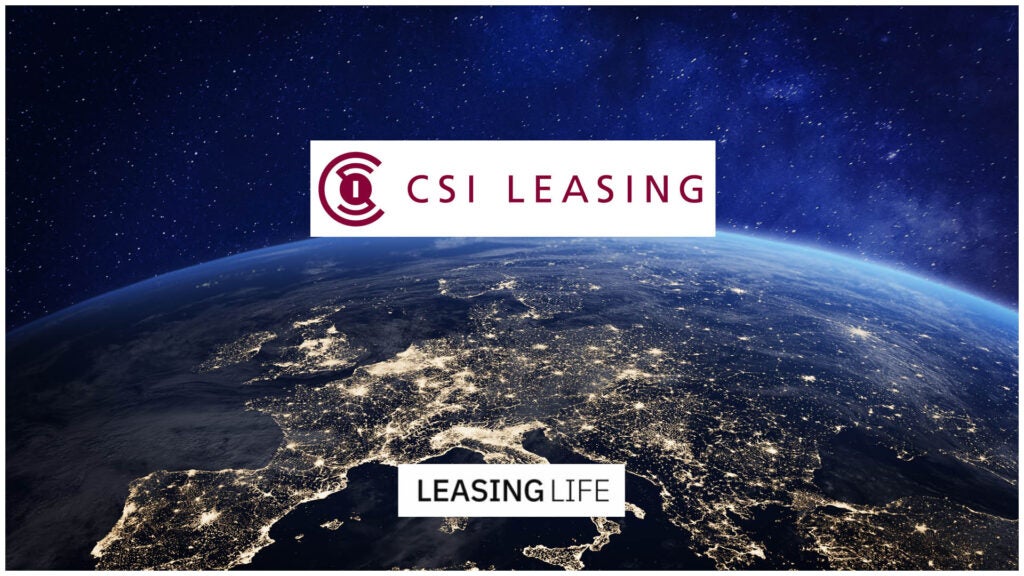
A number of respondents to the Leasing Life 2014 vox pop review commented on the importance of technological innovation.
Jonathan Andrew, chief executive of the commercial finance division of Siemens Financial Services specifically referenced digital disruption and digitisation as influencing the way the asset finance industry is serving its customers. So what exactly is disruptive technology?
Disruptive technologies can be defined as technologies that disrupt or supersede traditional business methods and practices. Physical manifestations will affect specific lease markets – for example, autonomous and near-autonomous vehicles that can navigate and operate with reduced or no human intervention.
LeasePlan UK is closely monitoring developments in connected car technology and driverless cars to see how these could impact its future mobility strategy, says business development director Lesley Slater. "Ensuring that the tools drivers use for self-service of data match the capability and user experience of their broader digital engagement will be critical."
However, the real impact is and will continue to be felt in the way leasing services are delivered.
Digital technology is influencing how lessors do business in the form of finance apps, electronic signatures, self-serve portfolio management, online document production and automatic credit decisions. Lessors are just beginning to embrace digital technology in this way and it will become much more commonplace over the next few years.
How well do you really know your competitors?
Access the most comprehensive Company Profiles on the market, powered by GlobalData. Save hours of research. Gain competitive edge.

Thank you!
Your download email will arrive shortly
Not ready to buy yet? Download a free sample
We are confident about the unique quality of our Company Profiles. However, we want you to make the most beneficial decision for your business, so we offer a free sample that you can download by submitting the below form
By GlobalDataThat is the view of Simon Goldie, head of asset finance at the Finance & Leasing Association, who explains that business customers expect the same level of speed and accessibility as they do when they are purchasing a consumer product online.
"Twenty years ago a credit decision couldn’t be made without a written bank opinion, which took an average of two days to arrive, so three day decisions were the norm. Now a decision is expected in seconds and to make this happen lessors are linking with credit bureaus and developing automated credit decisions."
Michael Donnary is principal at Capgemini Financial Services USA and a member of the Equipment Leasing and Finance Association operations & technology committee.
He says that leasing companies are in a position to deliver the flexible consumption models and bundled product offerings that banks and other financial services companies shy away from. But he also warns that while digital innovation may increase positive experiences in some cases, delivering on the basics – including fair prices, broad product sets and dependable service – is imperative.
"The equipment finance industry is shifting from traditional to digital channels. Companies will need to develop more innovative and engaging service offerings and fully leverage social media. They have made a significant shift to digitisation or digital transformation, yet innovations mainly revolve around the front-end, while the back-end often remains overlooked."
Estimates indicate that 90% of the technology budgets of North American and European financial institutions are spent on managing and maintaining legacy systems. Such legacy systems impede the ability to have a unified view of data and these inefficiencies in the back office impact customer satisfaction and the overall customer experience.
"Most equipment finance companies also believe their current operational processes are not adaptable to new demands," continues Donnary. "Our research with the MIT Center for Digital Business revealed that only 30% of industry executives felt their operational processes could adapt quickly to external changes. In the wake of increasing compliance, shrinking margins and evolving customer demands, we can expect digitisation of processes to be a major lever to improve productivity and reduce costs."
Georgios Kolovos, marketing director at GE Capital observes that there is a greater than ever emphasis on digitisation and how this affects the customer brand experience, causing many industries to transform the way they do business.
"In the leasing industry, digitisation has resulted in two significant changes; new asset types (such as cloud services) and an enhanced requirement for better and faster customer service. Leasing has seen limited innovation in products and technologies since the global financial crisis. During the same period other part of the economy, in which leasing customers operate, have moved extremely fast, presenting a challenge. To catch up, the leasing industry needs to continually find new ways to innovate through using talent to identify ways to challenge the status quo."
When asked how customer demand for speed of service, customisation and multiple access channels is changing the way leasing services are delivered, Kolovos says the more appropriate question is how this can be seen as an opportunity for leasing companies to reach beyond their current segments and expand the relationship with their existing customers.
According to Enrique Riquelme, senior managing director of sales and marketing for Europe at CSI Leasing, disruptive technologies represent both a threat and an opportunity.
The former comes from leasing companies holding on to a narrow view of the value add of leasing, focused on the economic benefits of ‘using things’ versus a new paradigm of enabling solutions to problems related to megatrends.
The opportunity arises from enabling flexible solutions for problems such as estimating the capacity required to implement a digitisation project. As companies embark on these projects they don’t always know how much capacity they will need and there are risks of underestimating demand as well as overestimating.
"Traditional leasing solutions fall short as most equipment provides discrete capacity units which can be increased or reduced only in ‘blocks’," says Riquelme. "If the solution is equipment driven, even if payment can be spread over time and the lessor takes a residual risk, the capacity risk remains an important barrier towards implementation for decision makers."
Enter ‘capacity leasing’ solutions, where pay-per-use models provide flexibility to end users to hedge capacity risk by providing solutions that are based on use rather than equipment.
Riquelme believes that lessors must consider, plan and model for different risks which include (but are not limited to) use versus equipment capacity, demand, scalability, shared resources, early returns for non-usage and performance.
To add a further level of complexity, beyond pay-per-use models, customers are looking for end-to-end managed services projects in which equipment is imbedded in the solution but it is not the core offering.
All of these elements are converging and are going to challenge the industry to provide solutions to finance digitisation and cloud based projects, adds Riquelme.
"The opportunity lies in embracing the change and understanding that what is going to provide value in the future is not the ‘things’ we lease but rather the solutions. These trends are also changing the type of relationship we have with the end user, as we will approach them through alliances with other players in the market (service providers, manufacturers, wholesaler) and not just on a simple lessor-lessee basis."
Macquarie Corporate and Asset Finance division director, Gerard Moon, reckons customers are differentiating between providers based on the convenience and ease of use of their online offerings and that those leasing companies who can facilitate quotation, application, documentation execution and settlement electronically will likely increase market share.
"Rapid technological change can create the perception of being constantly behind the curve and, more importantly, behind the competition. In reality, the key is to create a digital and IT capability that is in a state of constant development and improvement. Agile development methodologies help to enable cost effective and timely delivery of new and improved services to enhance the customer experience."
Moon calls on leasing companies to work towards eliminating ‘pain points’ and create a customer experience which differentiates them from their competition, which includes mobile app technology for easy use on smaller devices as well as websites with 24-hour operations.
"Features such as the ability to individualise the experience to suit the customer will add to the experience and can provide a competitive edge. The standard of delivery through such media is improving daily and companies must maintain a focus on constant enhancement in order to be seen as relevant in the market."
A crucial element in the changes effected by disruptive technology is the effective implementation of technology throughout the life of the lease, starting with the application process, explains Tim Reese, head of leasing for the US at Wells Fargo Equipment Finance.
"Leasing companies now enable customers (through direct sales or sales intermediaries) to submit applications online and with direct interface into lessor systems, transactions can be decisioned and lease documents prepared with little or no human intervention. Documents can be delivered online for signature or, in many instances, through mobile devices with electronic signatures becoming increasingly accepted by leasing companies."
As the process becomes as simple or as common as a credit card swipe, the opportunities for increasing the acceptance of leasing can grow exponentially. Once transactions are completed, all the necessary information and documentation is maintained online and customers are given 24-hour access to process payments and make inquiries, further simplifying the process and creating additional demand for leasing.
Customers want self-service, Reese continues. "They want online access to review all aspects of their lease including payment histories, payment schedules and lease documentation.
They want to receive invoices online and they want to make payments directly from their digital devices, they want to go online for answers rather than calling a customer service representative and they want to do it on their time, any time.
This trend will continue and leasing companies must make the customer experience throughout the life of the lease as simple and effective as possible."
The trend towards ‘IT consumption’ will disrupt leasing completely – the world where the options were either own or lease is rapidly disappearing, observes Irv Rothman, president and CEO of HP Financial Services.
"New competitors such as service providers and the growing use of the cloud offer alternatives to paying outright for IT as well as alternatives to leasing. The ability to consume IT capacity based on fluctuating usage demands has become the new norm and the old reliable key performance indicator of total cost of ownership needs to get tossed out the door in favour of ‘total cost of usage’."
Digitisation of middle and back office processes is also important, adds Philippe Rozental, COO of SGEF. "Another challenge is around reporting and big data. Our customers are increasingly demanding regarding reporting and underlying analysis and we need to analyse our data more deeply and integrate external database to meet those challenges."
Mobility enables partners to wrap up and secure sales much more quickly, allowing customers to benefit from increasing responsiveness, says François Régis Martin, chief digital officer BNP Paribas Leasing Solutions.
"Leasing companies are only one link in this chain and this means that we must constantly adapt if we are to continue to be the preferred partner."
Customers still want to align payment to benefit when purchasing any asset (tangible or intangible), so the demand for payment options is healthy and should increase steadily as the economy grows in the coming years.
That is the view of Kevin Flowerday, head of technology finance at United Trust Bank, who describes the challenge for lessors and lenders as how those payment options are to be delivered and whether the traditional lease agreement is the correct vehicle.
"With manufacturers increasingly coming to the market with subscription/hosted models that incorporate variable payments at different points and break clauses throughout the term of the agreement, the one size fits all approach would appear to be coming to an end and lessors will have to be more nimble and innovative to be able to offer the solution needed."
Technology obsolescence has always been a challenge for funders and customers, although more in relation to hardware financing than software and associated services, Flowerday concludes.
"We see technological advancement as positive for us and the client. Unless a lessor is in the licence chain with the author, they have no ownership/obsolescence issues as it is completely in the customer’s hands to make sure they are getting the best deal and that their technology is fit for purpose."








